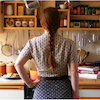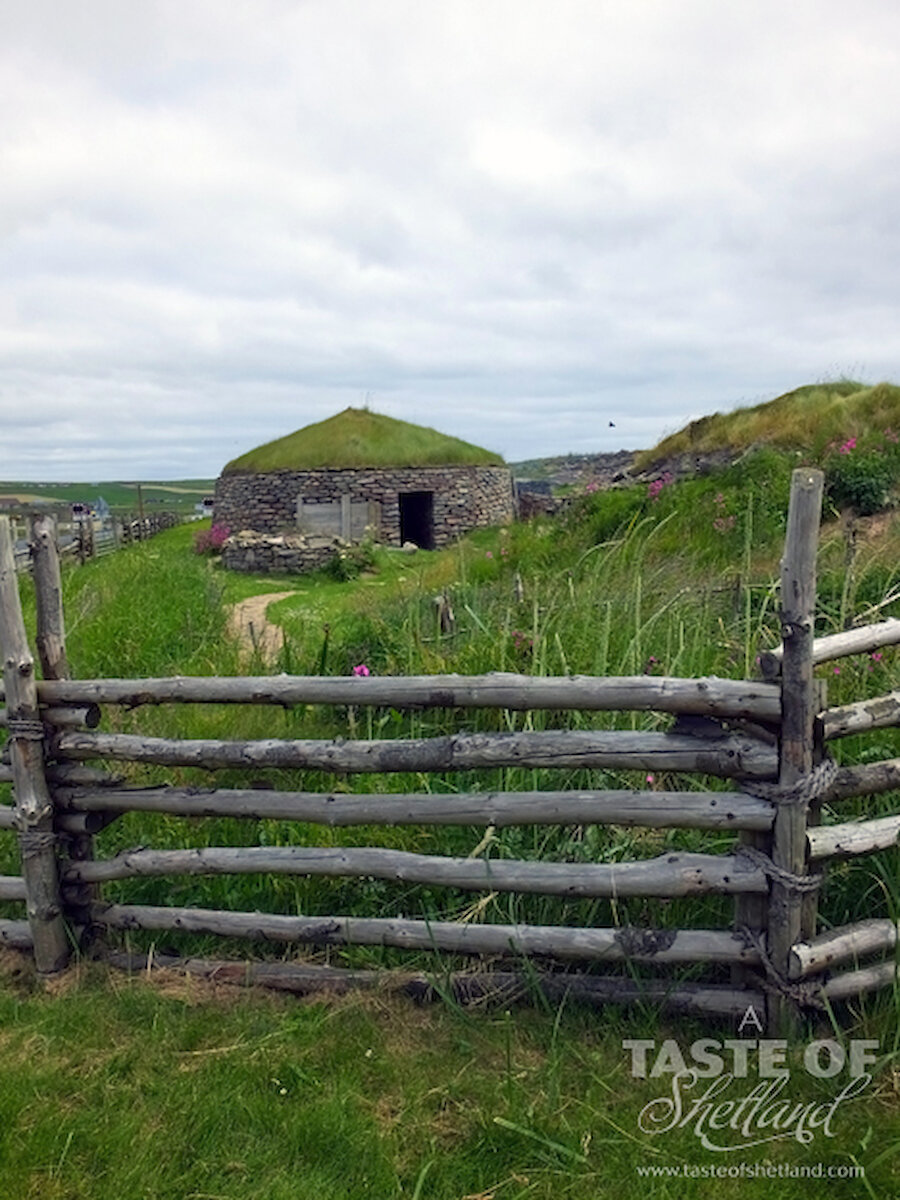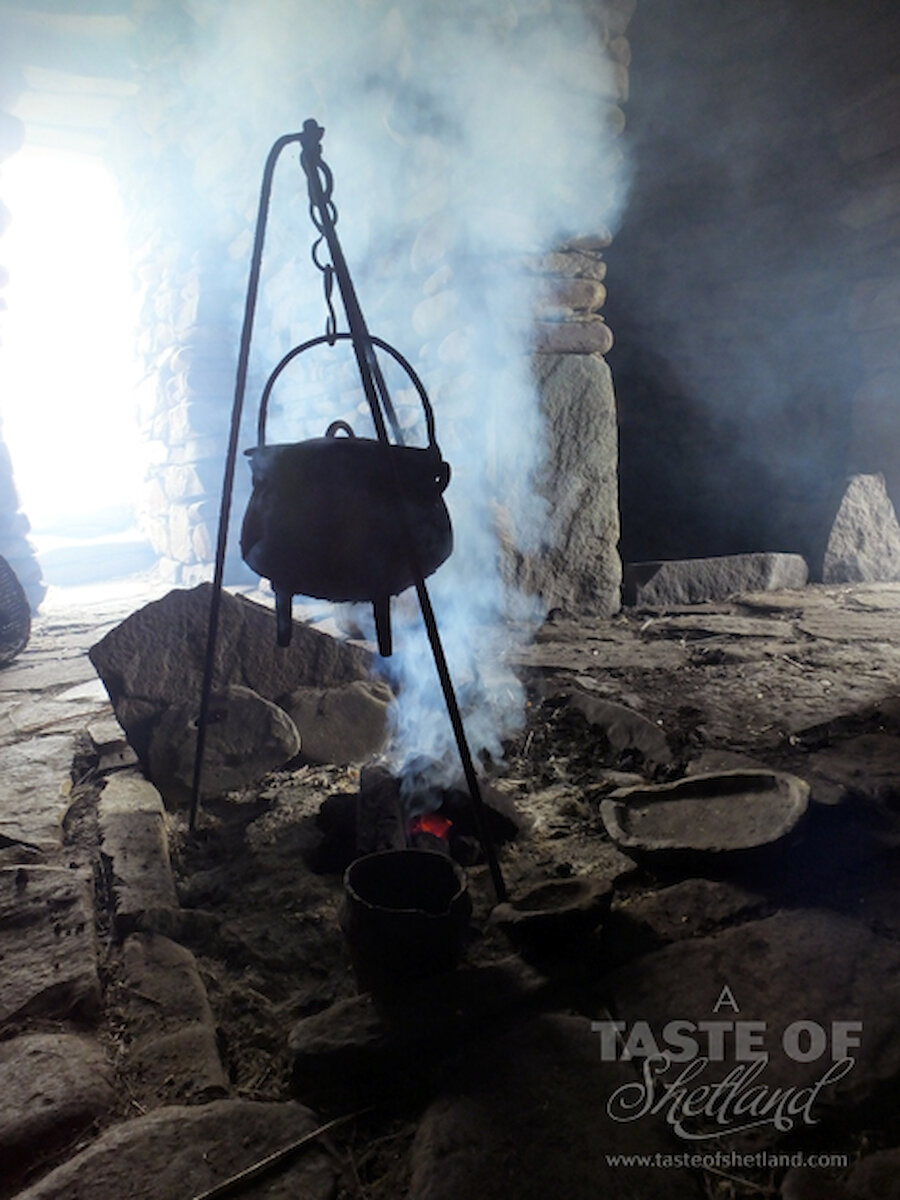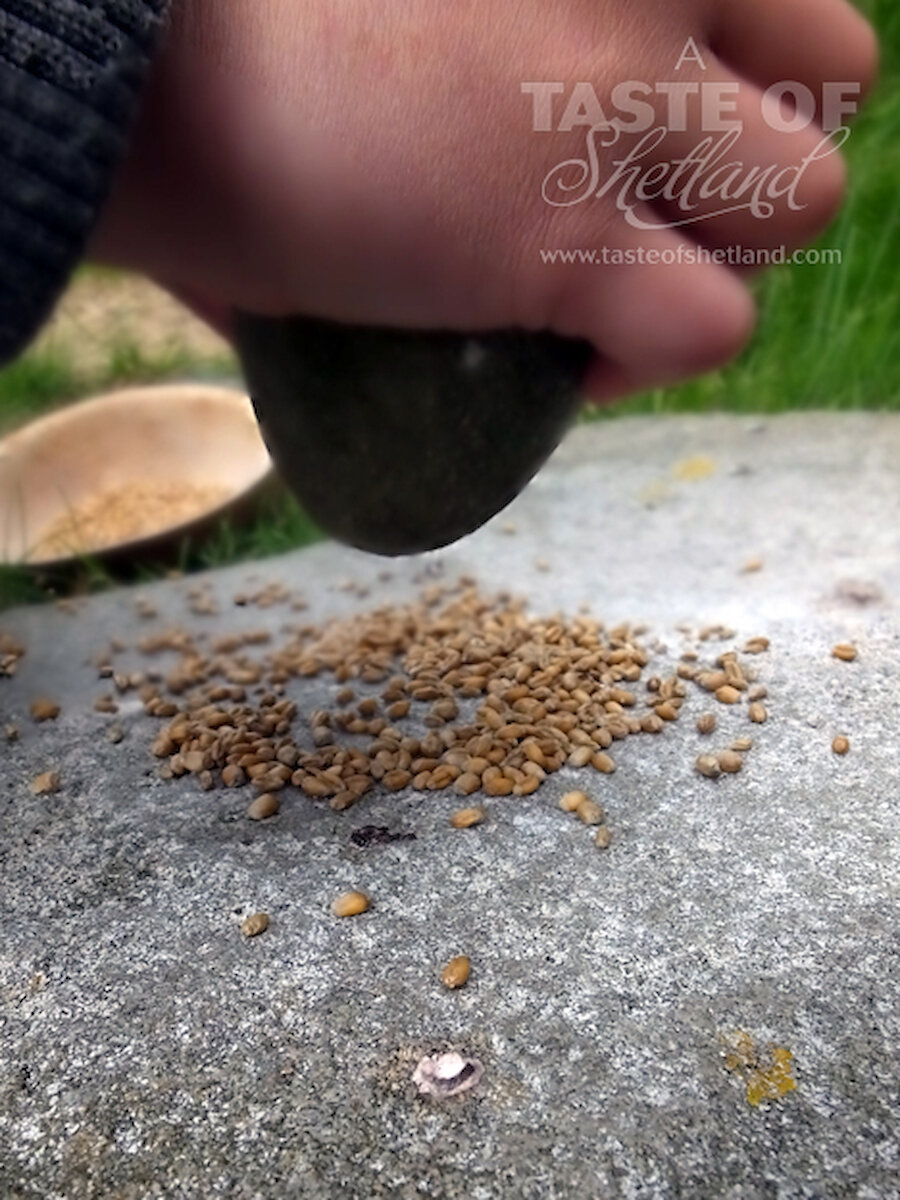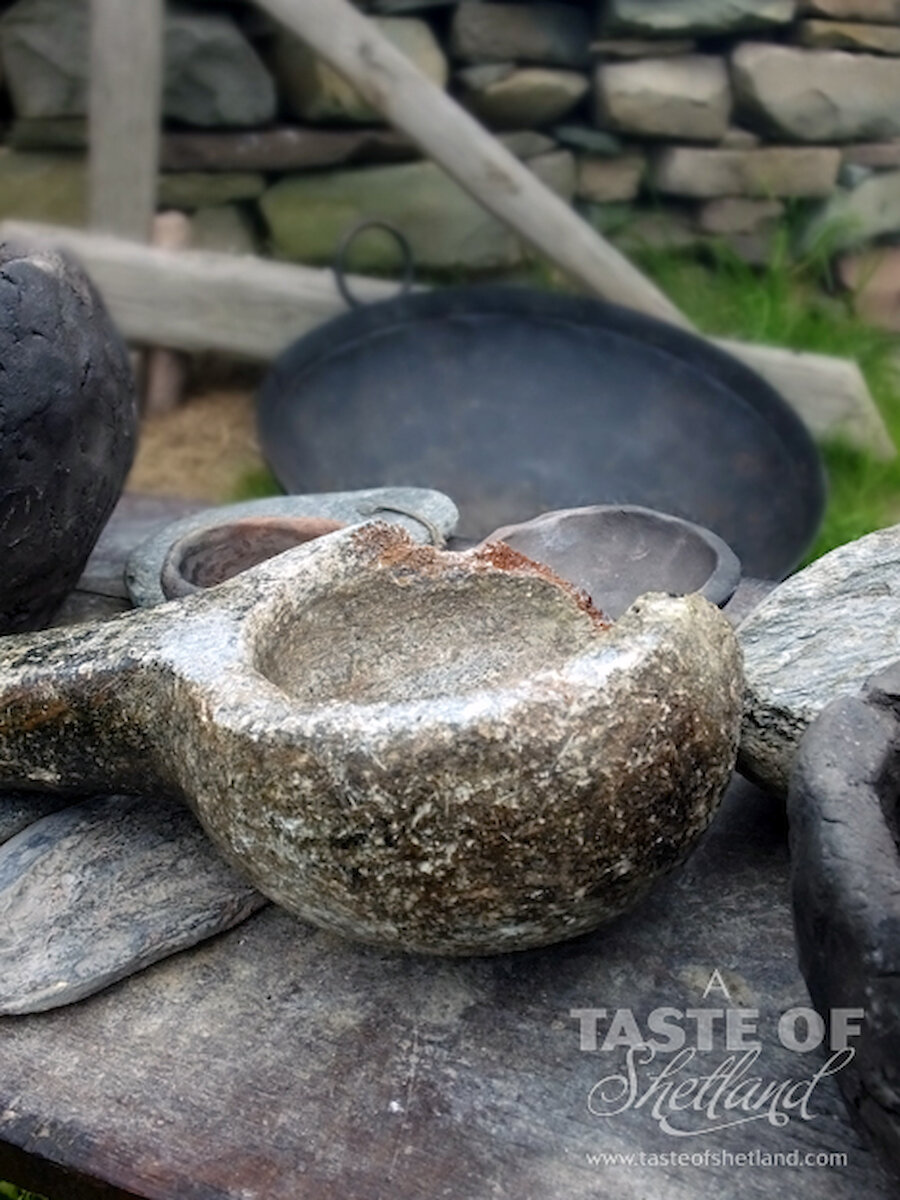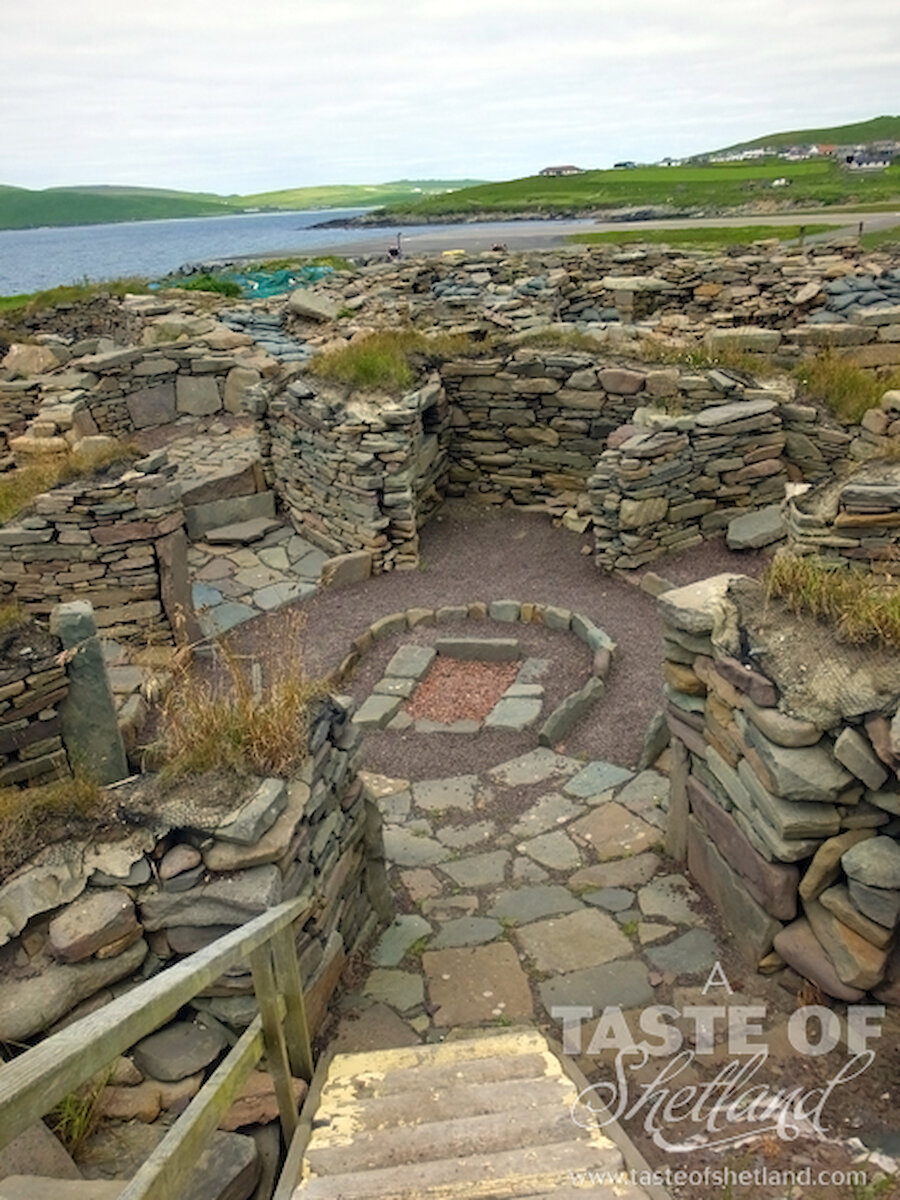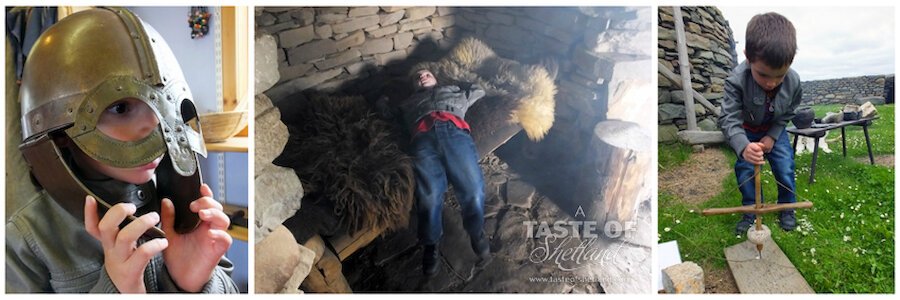My elderly neighbour has never had a driving license, so I often give her a lift to doctor's appointments and the like; after all, it's the neighbourly thing to do. This morning she needed a lift to the Sumburgh airport as she's away south on her summer holidays visiting family. Although it's an hour's drive to the airport I was glad to make the trip as it gave my youngest and I the excuse to go puffin spotting at the Sumburgh Lighthouse and RSPB Nature Reserve. The visitor centre has recently been renovated and they've done a fantastic job with it; it's well worth a look!
No summer is complete, in my humble opinion, if I haven't managed a visit to see these quirky little birds. It can be hit or miss whether or not there are any puffins on shore when you visit, but we were in luck today as there were hundreds.
Here's the obligatory puffin photograph to prove it. Aren't they adorable!
On the way to the airport, I noticed an "Open Today" sign out in front of the Old Scatness archaeology site. Smoke was wafting out from one of the reconstructed Iron Age houses - smoke from an Iron Age house can mean only one thing - a cooking fire!
Curiosity got the better of me so we popped in to have a look-see at this Iron Age broch and village dating back to 200-400 BC. I wanted to see if they were cooking anything. Food became the topic of conversation with the lovely lady minding the information centre and gift shop and she pulled out a few copies of recipes which would have been cooked on site, thousands of years ago, including that for an unleavened malt bread.
The Old Scatness archaeology site was discovered when the access road to the airport was being constructed during the 1970s. The wealth of artefacts found on site, and the construction of the buildings themselves have given archaeologists the rare opportunity to explore what life was like in Shetland during the Pictish-Viking transition.
Guides are usually available to provide visitors with a detailed tour of the area, but these should be booked in advance.
Scatness is a very hands-on site to visit, with plenty of things to see and do. You can have a go at wearing some prehistoric tunics and helmets, try out the sheepskin beds in the replica Iron Age house or have a shot at drilling holes in wood the way it was done thousands of years ago.
Living History demonstrators are often on site during the summer months with specialist craft workers showing off their skills.
It's definitely a place to see if you visit Shetland; it's great fun for all the family and a whole lot of awesome! My five year old asked, when we drove out of the car park, if we could go back to that rocky place again tomorrow because it was the best day ever.
If you fancy trying the bread recipe below, wheat berries can be purchased inexpensively from Scoop Wholefoods in Lerwick or at most wholefoods shops on the mainland.
You can read more about Scatness here and here, or if you fancy puffin watching yourself from where ever you are in the world have a look at the PuffinCam live from Sumburgh Head.
Unleavened Malt Bread
Course: Main
Servings: 30 cakes
Ingredients:
For the Wheat Malt
- Wheat Berries -
For the Unleavened Malt Bread
- Stone ground floor - 500 grams
- Ground wheat malt - 1 cup
- Sea salt - 1 tsp
- Water - (to mix)
Instructions:
- Place wheat berries into a glass jar and cover with tepid water. Drain, rinse, and invert the jar so the excess water can drain off.
- Fasten a clean cheesecloth with a rubber band around the jar opening and leave the wheat berries for 12 hours.
- Repeat every 12 hours and after 36-48 hours you should see sprouts appear.
- Spread sprouts on a single layer out on a baking tray and bake in a moderate oven, turning occasionally, until browned and crisp.
- Remove from oven and allow to cool.
- When completely cooled, grind the toasted wheat sprouts between two flat stones (or in your food processor).
- Store in an airtight container until needed. A tupperware container will work but a ceramic jar with a wooden stopper sealed with beeswax is a little more authentic, if you happen to have one on hand.
- Combine the dry ingredients for the unleavened malt bread together in a medium sized bowl.
- Add enough water to make a soft dough.
- Divide dough into 30 pieces and form into small flat round cakes.
- Cook on a hot cast iron griddle until golden brown on each side.
